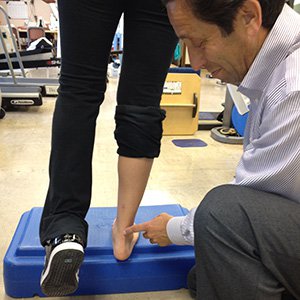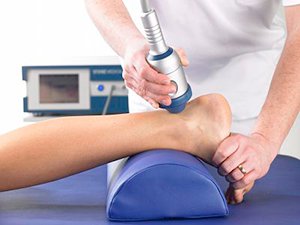 30th Sep 2015
30th Sep 2015
How to Treat Achilles Tendinopathy with Physical Therapy
The Achilles tendon is the strongest and thickest tendon in the body and can withstand a load stress of almost four times an individual's body weight when he is walking. When running, the load stress nearly doubles. An Achilles

tendon injury (tendinopathy) is one of the most common causes of pain when walking or running. While Achilles tendinopathy affects both active and inactive individuals, it is most common in active individuals; an estimated 50% of runners will experience Achilles pain in their running careers. In all individuals, Achilles tendinopathy can make daily activities such as walking, climbing stairs, or participating in recreational activities difficult. Most often, Achilles tendon pain is the result of repetitive trauma to the tendon. The repetitive strain can result in chronic Achilles tendinopathy, which is a gradual breakdown of the tissue and is best treated with physical therapy.
Treating Achilles Tendinopathy with Physical Therapy
Achilles tendinopathy may result from a combination of ankle stiffness, calf tightness or weakness, abnormal foot structure or mechanics, wearing improper footwear, and a change in physical activity. Achilles tendinopathy presents as pain which be present at any point along the tendon; but most common area to feel tenderness is just above the heel.
- Range of motion: The patient’s ankle, foot, or knee joint may be moving improperly, causing increased strain on the Achilles tendon. Learning to self-stretch and using manual therapy techniques (massage and movement) applied to the lower body will help restore and normalize motion in the foot, ankle, knee, and hip can decrease the tension on the tendon.
- Muscular strength: Muscular weaknesses or imbalances can result in excessive strain on the Achilles tendon. Using an individualized, progressive, lower-extremity resistance program will help correct the muscular imbalance and weakness.
- Iontophoresis: Iontophoresis is a means of delivering steroids through the skin. The steroid is applied to the skin and then an electrical current is applied that causes it to migrate under the skin. The steroids then produce an anti-inflammatory effect in the heel.
- Ultrasound: Ultrasound therapy has been shown to decrease pain, increase function and improve injury repair. The sound waves of ultrasound are converted into heat within the deep tissues, which opens the blood vessels and allows oxygen to be delivered to the injured tissue of the heel.
- Cold Compression Therapy: Cold compression units use air pressure which wraps the heel and ankle for better surface contact, allowing the system to pull heat away from the injury site more efficiently and lowers pain and swelling. Additionally, the active pneumatic compression mimics the body’s natural muscle contractions which stimulate blood flow while simultaneously carrying edema away.
Without physical therapy, the patient’s only real choice is to extremely limit their activity level while they wait for their injury to heal. Treating Achilles tendinopathy with physical therapy is the quickest way patients will get back on their feet again and engaging in their favorite physical activities.
For more information about physical therapy machines and their applications please see ProHealthcareProducts.com.






